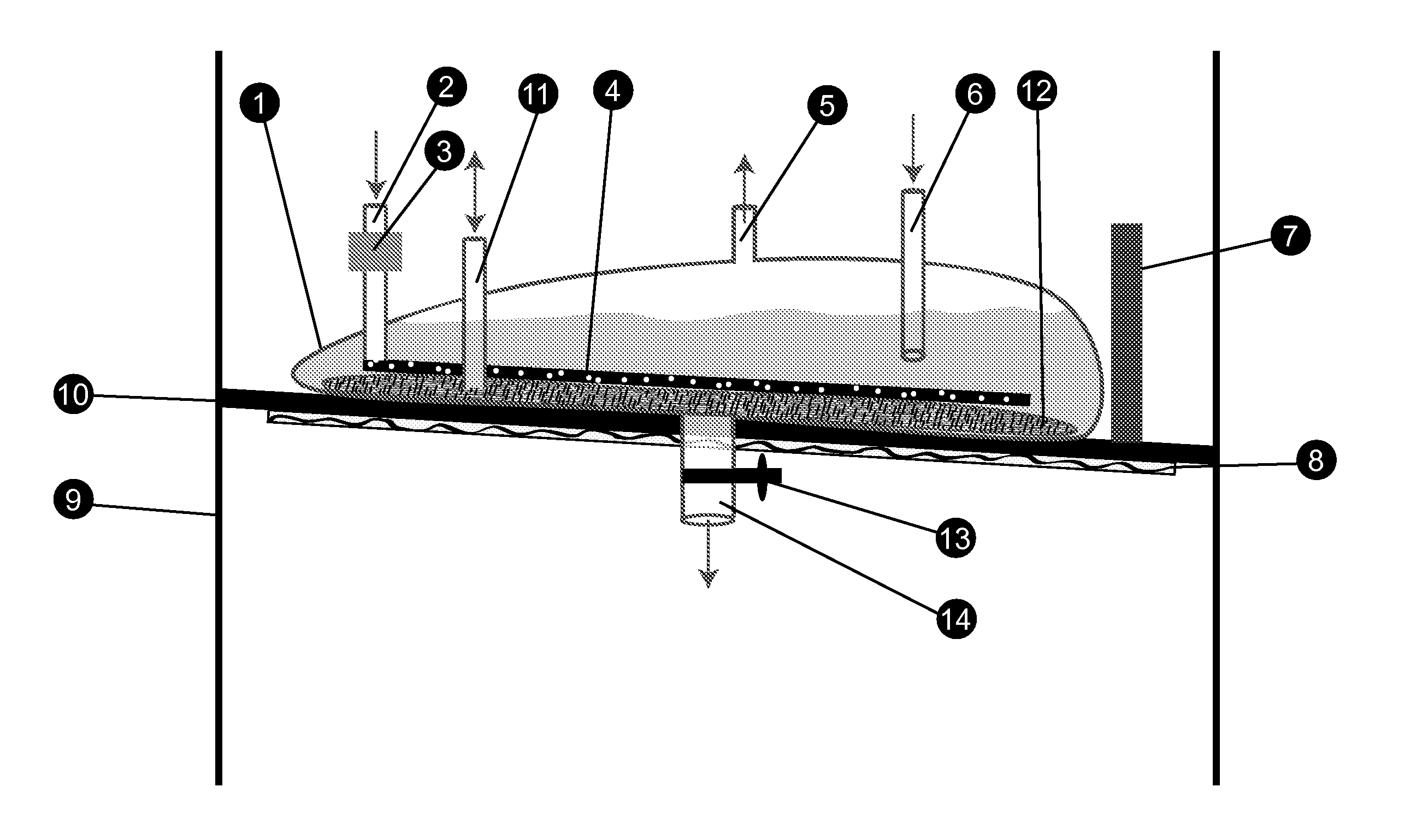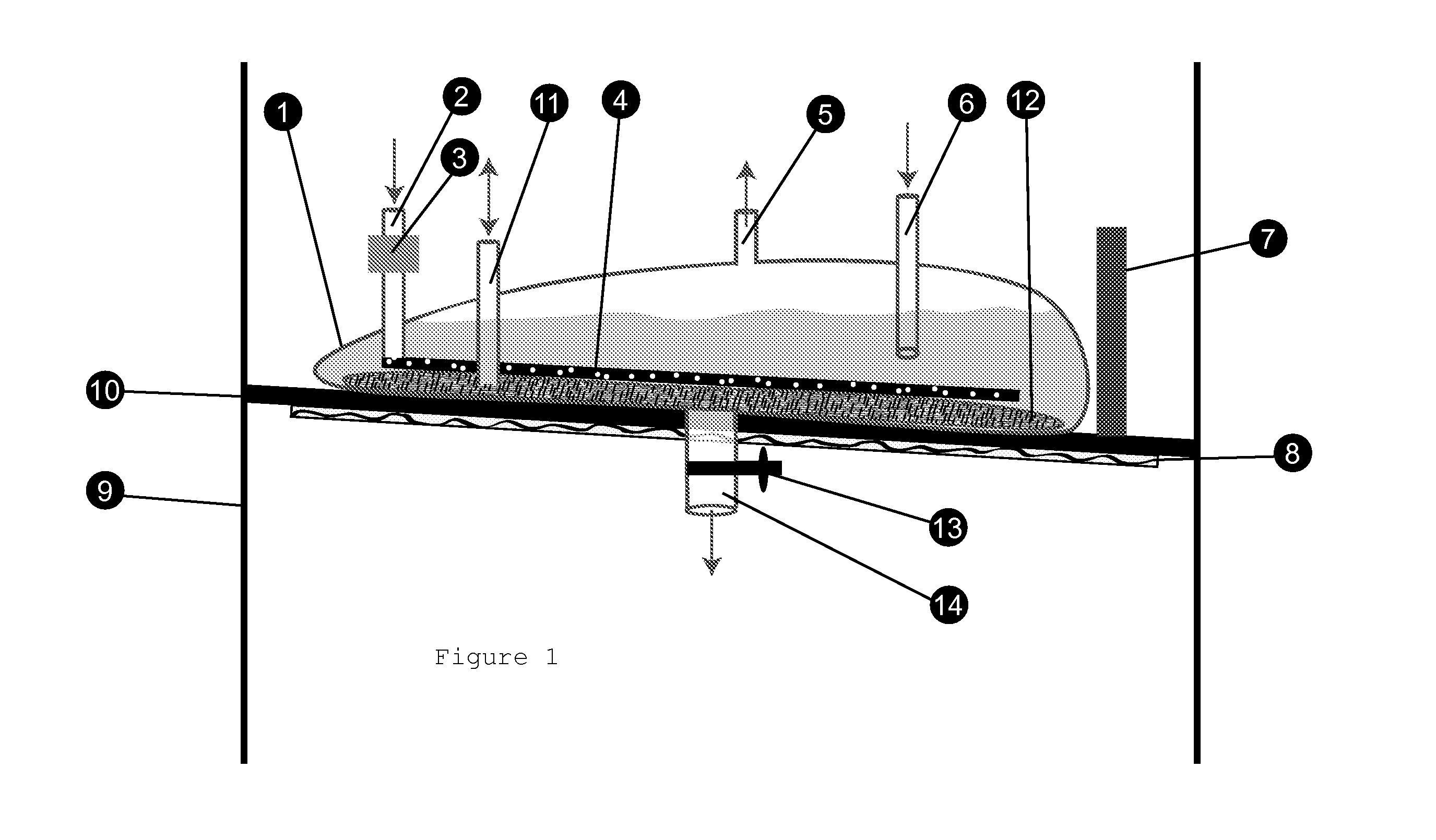Separative Bioreactor
a bioreactor and separator technology, applied in the field of separate bioreactors, can solve the problems of difficult to use these steps, use very large-scale filtration and volume reduction methods that cost millions of dollars to install and millions more to operate and maintain, and achieve the effect of improving the ability to elu
- Summary
- Abstract
- Description
- Claims
- Application Information
AI Technical Summary
Benefits of technology
Problems solved by technology
Method used
Image
Examples
first embodiment
[0062]In a first embodiment, the instant invention proposes a bioreactor capable of growing all types of cells and organisms and additionally provides a ready means of harvesting of biological products in a bioreactor. The instant invention employs a mechanical device, which in one step combines several steps or biological product harvesting. The method of the present invention presents a novel procedural step for simultaneously extracting and concentrating a biological product of interest from a host cell, at the same time removing practically all, or at least the majority of the host cell biological products.
second embodiment
[0063]In a second embodiment, the present invention relates to a bioreactor that contains a resin capable of binding target biological products but kept separate from the culture medium by placing it inside a pouch that has porous walls with pores small enough to hold the resin inside the pouch yet allow the culture media containing target biological product to freely equilibrate with the resin. By placing the resin in a pouch, several arduous step in protein harvesting are avoided. It is the purpose of this invention to work the purification process in an opposite order to how the art is currently practiced universally. In all instances, upon the completion of the bioreaction, the first step is to remove the host cells or organisms by filtration or centrifugation. With the bioreactor volumes into thousands of liters, this process is extremely arduous, expensive and requires additional storage vessels of about the same size as the bioreactor making it difficult to accommodate these ...
third embodiment
[0064]In a third embodiment, the instant invention obviates the need for costly cross-flow filtration processes used in every type of manufacturing of biological products as in almost all instances a concentration step is involved to reduce the volume of liquid that is loaded onto purification column. The purification of biological therapeutics generally involves the use of cross flow filtration (tangential flow filtration), normal flow filtration (dead ended filtration) combined with chromatographic separations. Cross flow filtration and normal flow filtration retain matter through size exclusion and are complementary to chromatography's selectivity. For processes where volumes are large such as into thousands of liters, the cost of equipment for filtration is into hundreds of thousands of dollars with expensive filters all adding to a cost that represents a major fraction of the total cost of manufacturing of recombinant drugs.
PUM
| Property | Measurement | Unit |
|---|---|---|
| Angle | aaaaa | aaaaa |
| Length | aaaaa | aaaaa |
| Diameter | aaaaa | aaaaa |
Abstract
Description
Claims
Application Information
 Login to View More
Login to View More - R&D
- Intellectual Property
- Life Sciences
- Materials
- Tech Scout
- Unparalleled Data Quality
- Higher Quality Content
- 60% Fewer Hallucinations
Browse by: Latest US Patents, China's latest patents, Technical Efficacy Thesaurus, Application Domain, Technology Topic, Popular Technical Reports.
© 2025 PatSnap. All rights reserved.Legal|Privacy policy|Modern Slavery Act Transparency Statement|Sitemap|About US| Contact US: help@patsnap.com


